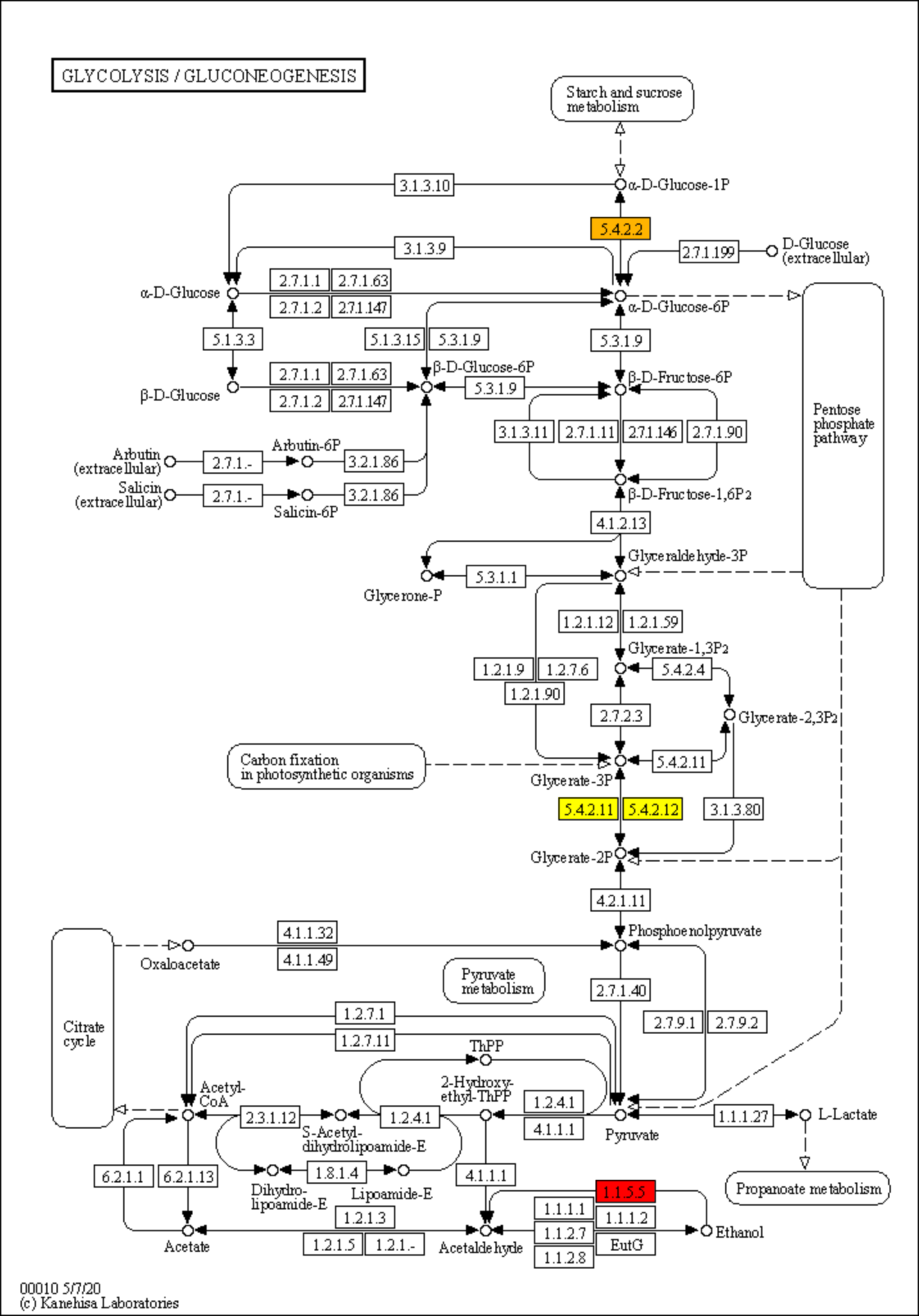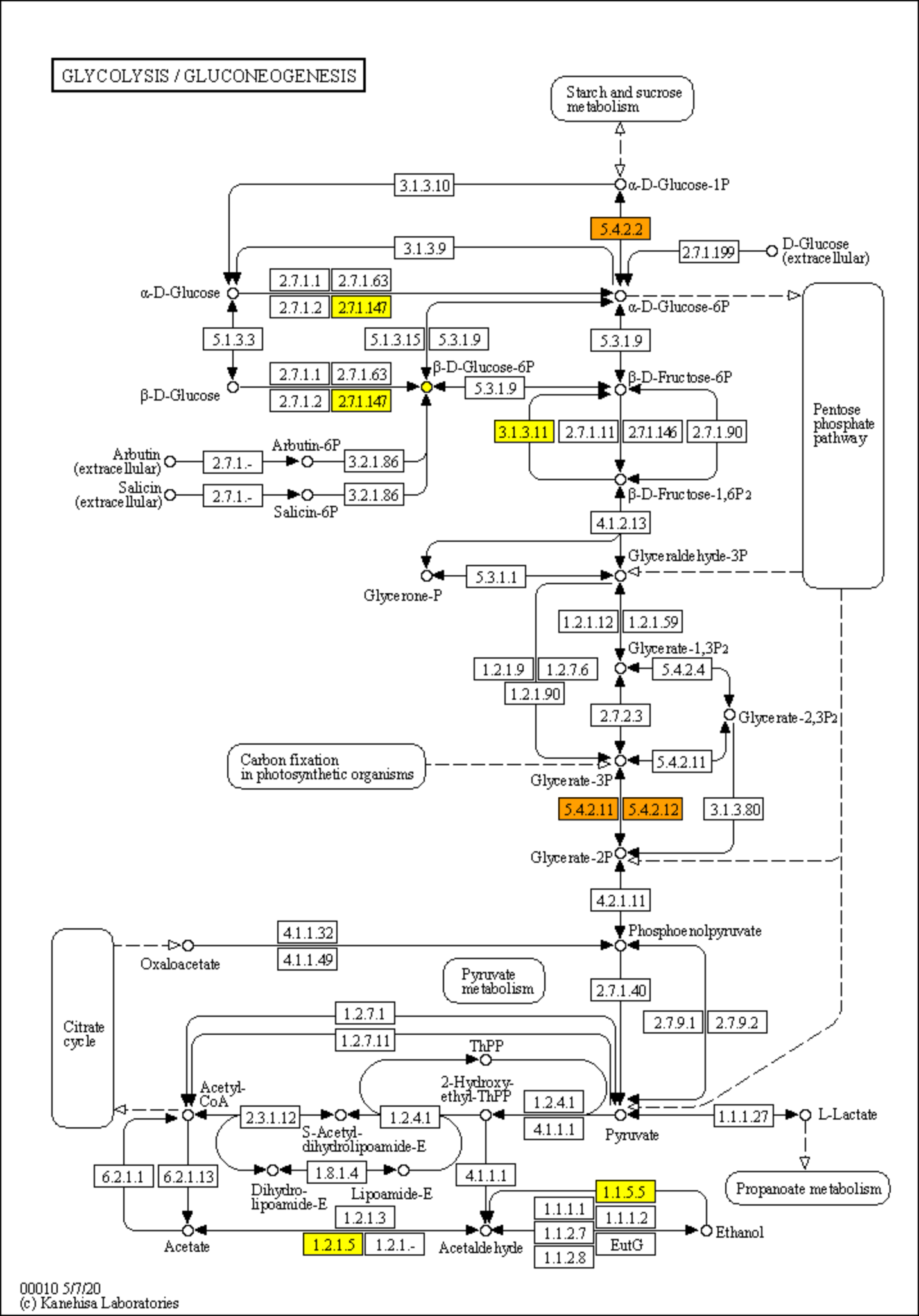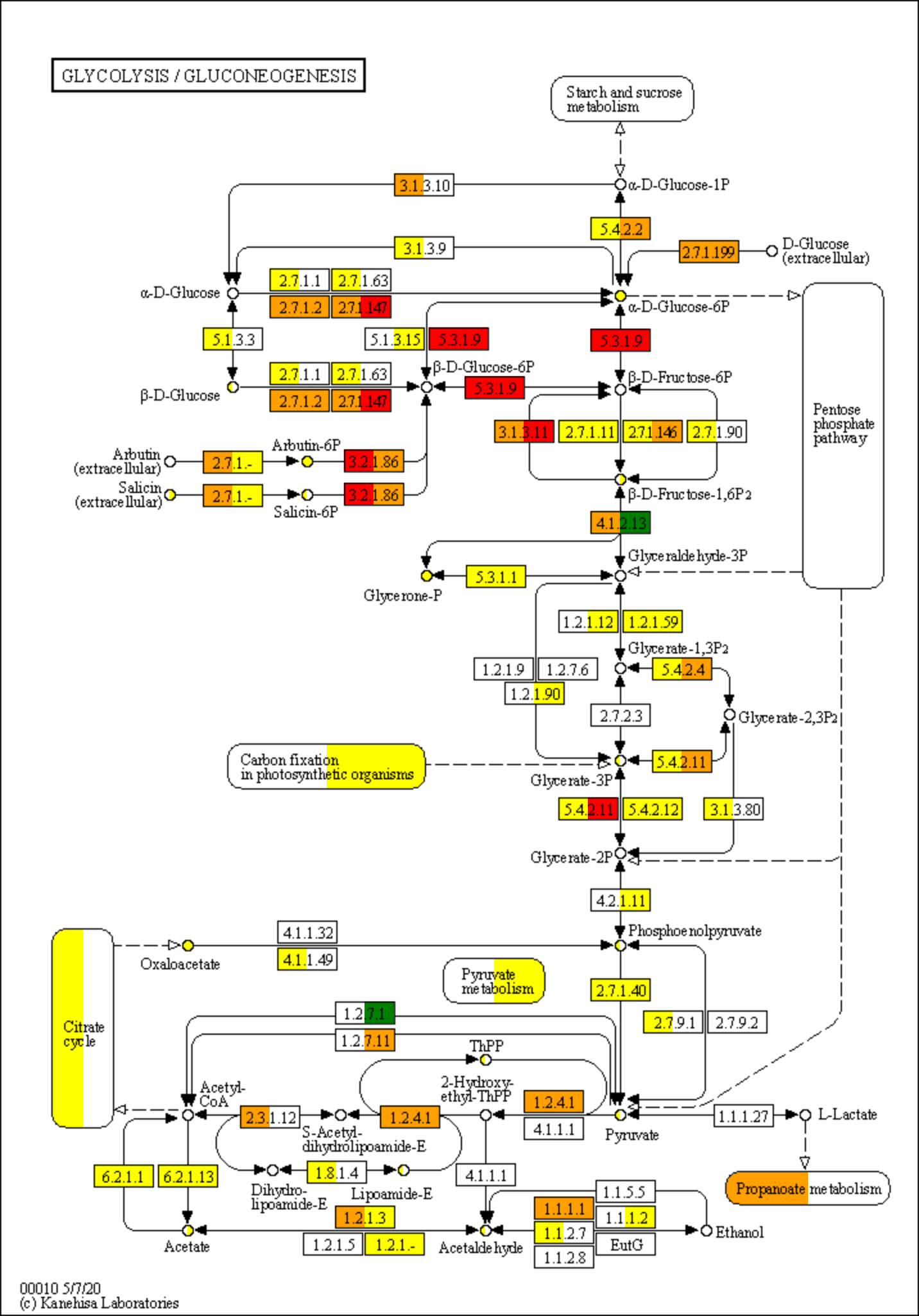KeggMapWizard
Warning Using this tool may require a KEGG subscription!
This script downloads KEGG REST data, KEGG configs and KEGG PNGs and converts them into SVG maps which can be processed dynamically using modern browsers.
I included a simple JavaScript library that enables coloring the maps. It requires
- jQuery
- chroma.js to calculate color gradients
- html2canvas to render the SVGs as PNGs
Python
Creating the SVGs
Install the requirements. pip install poetry && poetry install
Set the environment variable KEGG_MAP_WIZARD_DATA to where you want data to be downloaded to.
export KEGG_MAP_WIZARD_DATA='/path/to/desired/download/location'or in Python:
import os
os.environ['KEGG_MAP_WIZARD_DATA'] = '/path/to/desired/download/location'In a Python 3.9 console, type:
from kegg_map_wizard import KeggMapWizard, KeggMap, KeggShape, KeggAnnotation, ColorMaker
kmw = KeggMapWizard(orgs=['ko', 'rn', 'ec']) # merge ko, rn and ec annotations
kmw.download_maps() # this will download all available KEGG maps
kmw.download_maps(map_ids=['00400'], reload=True) # this will only download this specific KEGG map
# Create KeggMap object
kegg_map = kmw.create_map('00400')
# Create SVG
svg = kegg_map.svg()
# Save SVG
with open('/path/to/outfile.svg', 'w') as f:
f.write(svg)By default, all shapes are transparent. Below are some examples on how to apply colors:
def custom_color_function(shape: KeggShape):
'''Color all shapes red'''
return 'red'
def custom_color_function(shape: KeggShape):
'''Color only shapes with the annotation K01623 red'''
if ('K', 'K01623') in shape.annotations_dict:
return 'red'
else:
return 'transparent'
def custom_color_function(shape: KeggShape):
'''Color all shapes with 4 sequential colors (yellow, red, blue, green)'''
shape.definition = ColorMaker.svg_gradient(
colors=['yellow', 'red', 'blue', 'green'],
id=shape.hash,
x1=shape.bbox.x1,
x2=shape.bbox.x2
)
return f'url(#{shape.hash})'
# Create svg using the custom_color_function
svg = kegg_map.svg(color_function=custom_color_function)The last custom_color_function results in this: 
The gradient is defined in shape.definition and looks like this:
<linearGradient id="{shape.hash}" gradientUnits="userSpaceOnUse" x1="{shape.bbox.x1}" x2="{shape.bbox.x2}">
<stop offset="25%" stop-color="yellow"></stop><stop offset="25%" stop-color="red"></stop>
<stop offset="50%" stop-color="red"></stop><stop offset="50%" stop-color="blue"></stop>
<stop offset="75%" stop-color="blue"></stop><stop offset="75%" stop-color="green"></stop>
</linearGradient>
Testing and colouring SVGs
To test the maps, run a simple http server in the kegg_map_wizard: python -m http.server 8000
Then open http://localhost:8000/kegg_map_wizard/html/map_tester.html
JavaScript
Shapes can not just be colored via Python, but also via JavaScript in the web browser.
For an example, see how this library is used in OpenGenomeBrowser .
Required SVG format
The svg should have a title attribute. Example:
<svg
title='Phenylalanine, tyrosine and tryptophan biosynthesis'
version='1.1' baseProfile='full' xmlns='http://www.w3.org/2000/svg' xmlns:xlink='http://www.w3.org/1999/xlink'
<!-- other attributes -->
>Each enzyme in the SVG needs to belong to the class shape and have the data-annotations-attribute. Example:
<circle cx='978' cy='930' r='4' fill='transparent' <!-- Must not be circle, can be any other SVG element -->
title='C00296 (Quinate)' <!-- will tooltip -->
class='shape compound' <!-- only class 'shape' is required -->
data-annotations='[{"description": "L-Ectoine", "name": "C06231", "type": "KEGG Compound"}]'> <!-- see below -->
/>The data-annotations-attribute tells the KeggMapWizard library which annotations are behind the shape.
Example:
[
{
"description": "L-Ectoine",
"name": "C06231",
"type": "KEGG Compound"
}
]How access the properties using JavaScript/jQuery
append a click event listener to all shapes:
$('.shape').click(function (event) {
showMapMenu(event, this)
})loop over all shapes:
$(".shape").each(function () {
// do something
console.log($(this).attr('title')) // or 'data-original-title'
})read data-annotations into a variable, loop over annotations, save the changes back into data-annotations:
let annotations = $(shape).data('annotations') // read
annotations.forEach(function (annotation, index) {
// do something
console.log(annotation['name'])
})
$(shape).data('annotations', annotations) // save changesHow to use PathwaySvgLib functions
highlight specific annotations:
highlightBinary(
color = "green",
annotations_to_highlight = ["R01518", "K15778", "K22473"]
)color using continuous numbers:
highlightContinuous(
svg = document.getElementById('custom-kegg').firstChild,
annotation_to_number = {R01518: 0, K15778: 0.5, K22473: 1},
colors = ['yellow', 'red']
)color organisms with gradient:
highlightOrganisms(
svg = document.getElementById('some-svg'),
organisms = {
"Organism 1": ["R01518", "K15778", "K22473"],
"Organism 2": ["K02446", "R00959", "C01172"],
"Organism 3": ["R01518", "K00129", "EC:2.7.1.147"]
},
colors = ['yellow', 'red']
)color groups of organisms with gradient:
highlightGroupsOfOrganisms(
svg = document.getElementById('some-svg'),
groupsOfOrganisms = {
Grp1: {
"Organism 1": ["R01518", "K15778", "K22473"],
"Organism 2": ["K02446", "R00959", "C01172"],
"Organism 3": ["R01518", "K00129", "EC:2.7.1.147"]
},
Grp2: {
"Organism 4": ["R01518", "K15778", "K22473"],
"Organism 5": ["K02446", "R00959", "C01172"]
},
}
)The enzyme boxes will be separated into as many areas as there are groups. Group 1 organisms color the leftmost area, group 2 the second from the left, etc.
save map as PNG
saveDivAsPng('id-of-svg')


